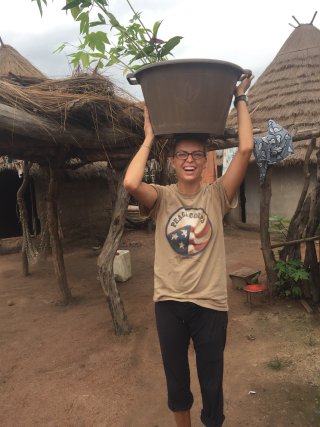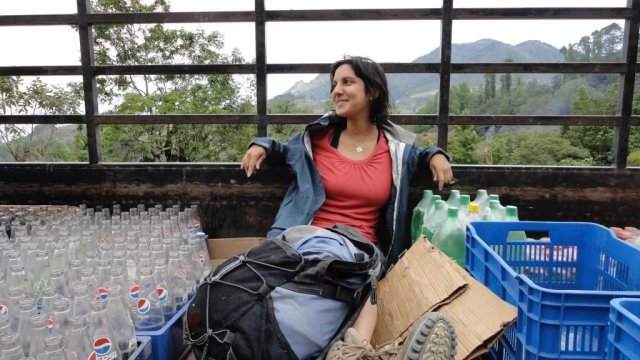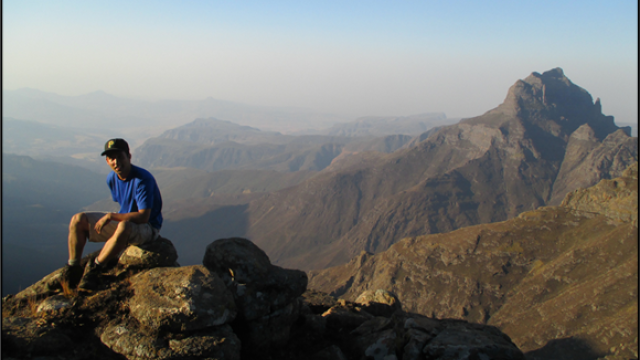From Peace Corps to EPA
Since 1961, at the invitation of foreign governments, more than 240,000 Americans have served the United States and countries around the globe as Peace Corps Volunteers. Currently more than 2,400 Volunteers work alongside community members in 58 countries, addressing the persistent impacts of COVID-19 and climate change, as well as tackling local development priorities across the Peace Corps’ six work sectors: Agriculture, Community Economic Development, Education, Environment, Health and Youth in Development.
This week, we celebrate Peace Corps Week, the annual celebration that commemorates March 1, 1961, the day that President John F. Kennedy established Peace Corps and honors how the agency fosters connections and contributes to meaningful change—in the United States and around the world.
Returned Peace Corps Volunteers at EPA

At the EPA, there are over 800 Returned Peace Corps Volunteers that served in nearly 80 countries.
The EPA and Peace Corps have a strong relationship as the EPA has more RPCVs than any other federal agency, excluding Peace Corps Headquarters. As a way to strengthen this relationship, the EPA and Peace Corps signed a renewal of a Memorandum of Understanding to enhance collaboration between the two agencies in May 2023. The MOU explores opportunities to cooperate on a wide range of environmental issues—including efforts to combat the climate crisis, improve solid waste management capacity, and expand the conversation on environmentalism—and promote environmental health in communities around the world. We hope this leads to even more RPCVs joining EPA once they finish their service abroad!
Over the years, the EPA RPCV group has interviewed many of our colleagues about their experiences overseas. In honor of Peace Corps Week, I thought I would share some of my favorite recollections from interviews over the years and some photos of EPA Peace Corps volunteers in action.
Reflections on time in Kosovo
When asked about her favorite memories from her time in Kosovo, Erin Joyce (R8) thought of a blog post she wrote as she was finishing her service:
Peace Corps is a spontaneous afternoon coffee, passing cows on the walk to school, stray dogs, waiting for buses, buses breaking down, the beauty of snowfall, lemon water, ginger tea, caj russi (black tea), brave runs through my village, vanilla coffees in the capital, Albanian conversations, nine-hour time differences, lots of bread, the warm embrace of a first grader, dancing at weddings for more than four hours, traditions, loud music, shelter pups, dark chocolate, laying in the sun, spelling bee practice, learning about gardening and farm animals, my new name ‘Erina,’ village cleanups on Earth Day, the strong handshake of my coworkers asking how I am, my host grandpa, learning how to make fli (Albanian bread), sharing cultures, fish bowl feeling, healing, my gratitude journal, hot stoves in winter, smoky cafes, stories from the war, heartbreak, new perspectives, travel, weekly Albanian class, planting vegetables, popcorn dinners, some days I want to go home and some days I know exactly why I stay, the simple moments, a sweet letter from a student or homemade socks from an aunt, playing volleyball, power outages with shadow puppets, ripped pants, dirty shoes, wet socks, walks in the mountains, bonfires, long bus rides, wet laundry, missing guac and chips and tacos and ice cream, picking wild blackberries and strawberries, mountain hikes, disorganization, patience, complete exhaustion, gratitude, runs through the valley, long chats with Nadire, forgiveness, confidence, hard work, the mountains, freedom, hot showers, pen pals, every day a new challenge, a new friend, a new Albanian word, and a new experience. This is Peace Corps to me and I’m thankful for it all.
Memories from Ukraine
When asked about her favorite memory from Ukraine, Kathrina Konfirst (R3) fondly recalls her time with her host mother:
Many of my favorite memories have to do with learning to prepare local foods. It’s such a great way to connect with people and their culture. One of my favorite moments in Ukraine was learning to make varenyky (Ukraininan dumplings). My host mother was very patient and showed nothing but support for my misshapen and undignified dumplings.
A Sense of Community in Guyana
When asked what his Peace Corps service in Guyana meant to him, Lance Caldwell (R2) had this to say:
I learned in a very tangible way the value of community and what authentic community support looks and feels like. This has driven me towards a more community-focused and supportive mindset in the places I have lived and worked since.
Learning about Yourself
And many others hope to serve again after retirement, like John Healey (OW) who was in Samoa:
I learned a great deal about my own resourcefulness and about the importance of community, and I would love to close out my federal career with another two years of volunteer service when I retire.
Peace Corps Volunteers at EPA
Peace Corps was an incredible experience that shaped many of us into the people we are today. I personally am so thankful for the people I met during my service who became family, as well as the connections it has fostered at the EPA and in other spaces. It is truly the toughest job you’ll ever love.
If you’re interested in learning more about the RPCVs@EPA group, please email RPCVs@epa.gov. If you’re interested in learning more about volunteering, visit the Peace Corps website.

About the Author
Clayton Batko
Program Analyst
Office of Air and Radiation, Office of Transportation and Air Quality
Clay Batko served in Tanzania and is currently the Executive Coordinator of RPCVs@EPA. He works in OAR-OTAQ on the Clean School Bus Program and attributes his time in Peace Corps for growing his skills as a creative problem-solver, community creator, and self-starter.
Editor’s Note: The views expressed here are intended to explain EPA policy. They do not change anyone’s rights or obligations. You may share this article. However, please do not change the title or the content, or remove EPA’s identity as the author. If you do make substantive changes, please do not attribute the edited title or content to EPA or the author.
EPA’s official web site is www.epa.gov. Some links on this page may redirect users from the EPA website to specific content on a non-EPA, third-party site. In doing so, EPA is directing you only to the specific content referenced at the time of publication, not to any other content that may appear on the same webpage or elsewhere on the third-party site, or be added at a later date.
EPA is providing this link for informational purposes only. EPA cannot attest to the accuracy of non-EPA information provided by any third-party sites or any other linked site. EPA does not endorse any non-government websites, companies, internet applications or any policies or information expressed therein.



